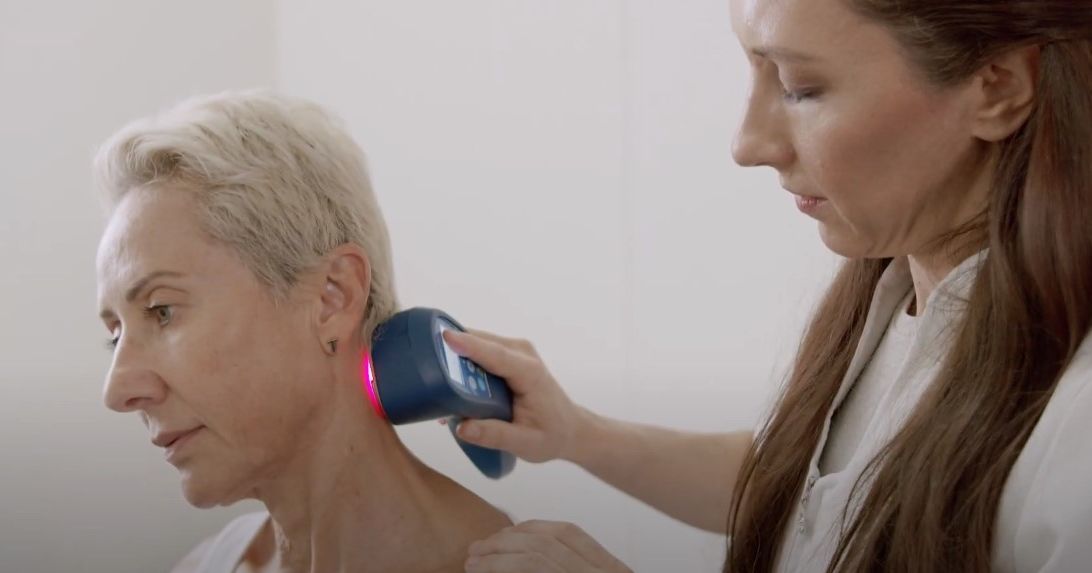Disc lesions with radiculopathy (arm or leg Pain) often cause patients to suffer low back and leg pain below the knee which often occurs suddenly following twisting or bending movements. A history of several cases of low back pain are generally accompanied with the condition. The condition was first thought to be caused by compression of a nerve root by a herniated nucleus pulposus, although it is currently understood that the nerve root is often inflamed but not always compressed.
Signs and symptoms of Disc lesion with radiculopathy:
- Sharp pain starting in the back and extending to the foot
- Sitting and coughing aggravates symptoms
- Weakness/numbness/tingling in the spine extending to the leg and foot
- Worsening pain with movement of the head and neck
- Pain in the arm or shoulder
Risk factors associated with radiculopathy:
- Ageing -Overweight
- Poor posture
- A family history of degenerative bone conditions -Repetitive motions of the neck and head
- Improper lifting techniques
- Excessive sitting
- Poor nutrition
- Smoking
- Lack of exercising and stretching
Differentials
The inflamed nerve root, the disc or compression of the nerve root may be the source of pain, although when there is leg pain without neurological evidence the pain is referred. Approximately 1% of patients report frank neurological symptoms. Management of Disc lesions with radiculopathy can be in the form of pain relief for example, ibuprofen or aspirin, or can be managed with physical therapy as well as conservative care in the form of ice and heat application.
Treatment of Disc Lesions with Radiculopathy can also be in the form of Cold Laser Therapy or Low-Level laser Therapy. Cold laser therapy is an application used widely throughout many health professions as it’s cost effective and efficient. The therapy is extremely quick and doesn’t expose the patient to any risks. Cold laser therapy (low-level laser therapy) in treating Disc Lesions with Radiculopathy targets the inflamed nerve root and provides oxygen and blood to the site of injury by freeing up the inflamed nerve.
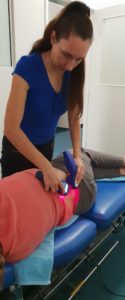
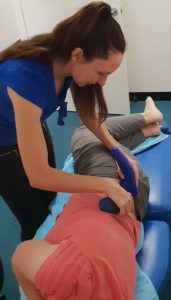
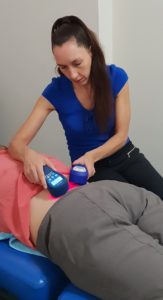
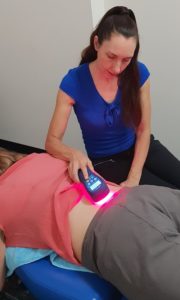
Protocol of cold laser therapy treatment on a disc lesion The laser emitter is placed on an angle of 30o lateral-medial down the IVF and exiting nerve. The procedure is performed with the patient lying on their side over a pillow to laterally flex and open the inflamed nerve root. The emitter is placed on different sections along the IVF with 2-4 minutes on each section with treatments lasting approximately 20 minutes each. It’s advised that patients attend 10-15 sessions for full recovery of the condition with visits 3 times per week recommended.
Disc lesions with radiculopathy are quite common in patients with 10-25% of the population being diagnosed with the condition at one point in their lives. If you have noticed any of the symptoms as mentioned above or your doctor had diagnosed you with the disease Lakeside Laser may help in the treatment.
Lakeside Laser provides fast and effective Cold Laser Therapy, using multiple emitters on site to accelerate your recovery process. Conveniently located in Gnangara, WA 6077—central to Perth’s northern suburbs—we proudly support clients from across the region, including Mindarie, Hocking, Iluka, Sinagra, Tapping, Ashby, Wanneroo, Two Rocks, Quinns Rocks, Greenwood, and Joondalup.
We have HICAPS facilities on site and are registered providers with Medibank and BUPA, while also accommodating many other health care providers.
If you’d like to book an appointment or discuss ongoing laser therapy management, feel free to contact Dr Linda Schiller on 0468 429 111 or visit our website at www.lakesidelaser.com.au. We look forward to supporting your recovery.


